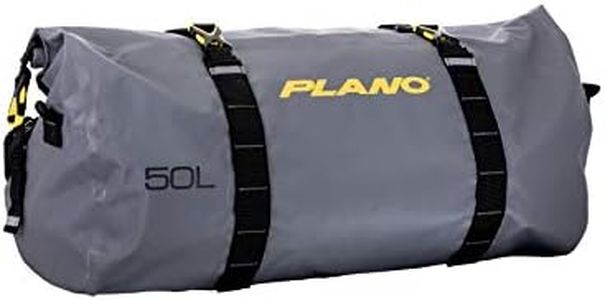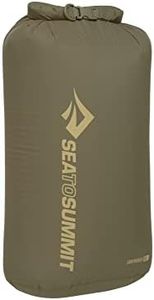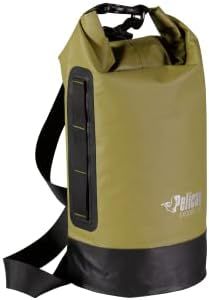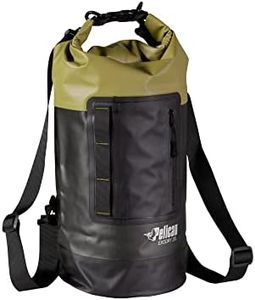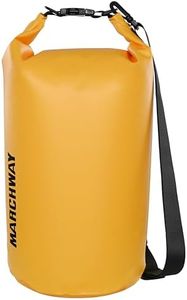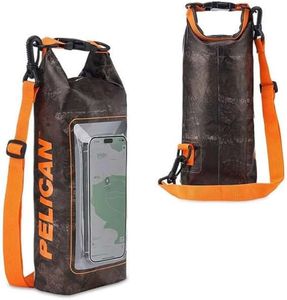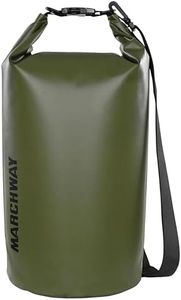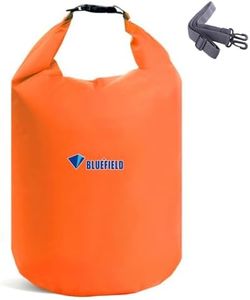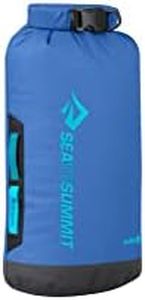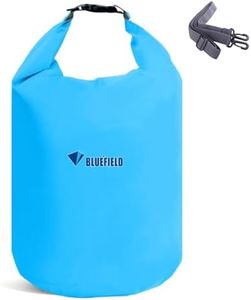We Use CookiesWe use cookies to enhance the security, performance,
functionality and for analytical and promotional activities. By continuing to browse this site you
are agreeing to our privacy policy
10 Best Kayak Dry Bags
From leading brands and best sellers available on the web.Buying Guide for the Best Kayak Dry Bags
Selecting the right dry bag for kayaking is important to keep your gear safe from water while on the water. Dry bags are designed to protect your belongings, such as clothes, electronics, and food, from getting wet while kayaking. Before making a purchase, consider how much gear you need to store, the kinds of activities you'll be doing, and how rough the water conditions might be. The right dry bag should fit your specific kayaking needs and make your trips more enjoyable and less stressful about keeping things dry.Capacity (Size in Liters)Capacity refers to how much a dry bag can hold, usually measured in liters. This is important because choosing the right size ensures you don’t overpack or have too much empty space. Small bags (between 5 and 10 liters) are suitable for essentials like keys, wallets, and phones. Medium-sized bags (10 to 20 liters) work well for a change of clothes, a packed lunch, or a camera. Large dry bags (20 to 40 liters or more) are best for overnight trips, storing sleeping bags, or bulkier items. Select a size based on how much you typically bring on your kayaking outings.
Material & DurabilityThe material of a dry bag affects its durability and how well it keeps water out. Common materials include nylon and PVC; nylon bags are lighter and more flexible, while PVC bags are thicker and more rugged. Heavier materials withstand abrasions against rocks, but might be stiffer. If you kayak in rough areas or often drag your bag, a thicker, more durable bag is best. For casual or calm water trips, lighter materials may suffice and offer more comfort.
Closure TypeClosure type determines how the bag seals shut. The roll-top closure is the most popular and offers reliable waterproof protection when rolled down several times and clipped securely. Some bags have zip-top or velcro closures; these may be more convenient but sometimes less waterproof than roll-tops. If complete water protection is crucial, especially if your bag might be submerged, choose a roll-top. For easy access and light splashes, alternative closures may be suitable.
Shape & Carrying OptionsDry bags come in various shapes and with different carrying features like single shoulder straps, backpack straps, or simple hand grips. A cylindrical bag is common and easy to pack, while some have flat bottoms for standing upright. Backpack-style straps are great for carrying gear over longer distances, whereas basic bags with a hand loop are lighter but less comfortable for long carries. Think about whether you'll need to hike with your bag and choose one that fits your carrying needs.
Transparency/Viewing WindowSome dry bags have see-through panels or are made from clear materials so you can quickly identify what’s inside without opening them. This can help with organization and convenience, especially if you have multiple bags. If you want to avoid rummaging around or mixing up contents, consider a bag with these features.
